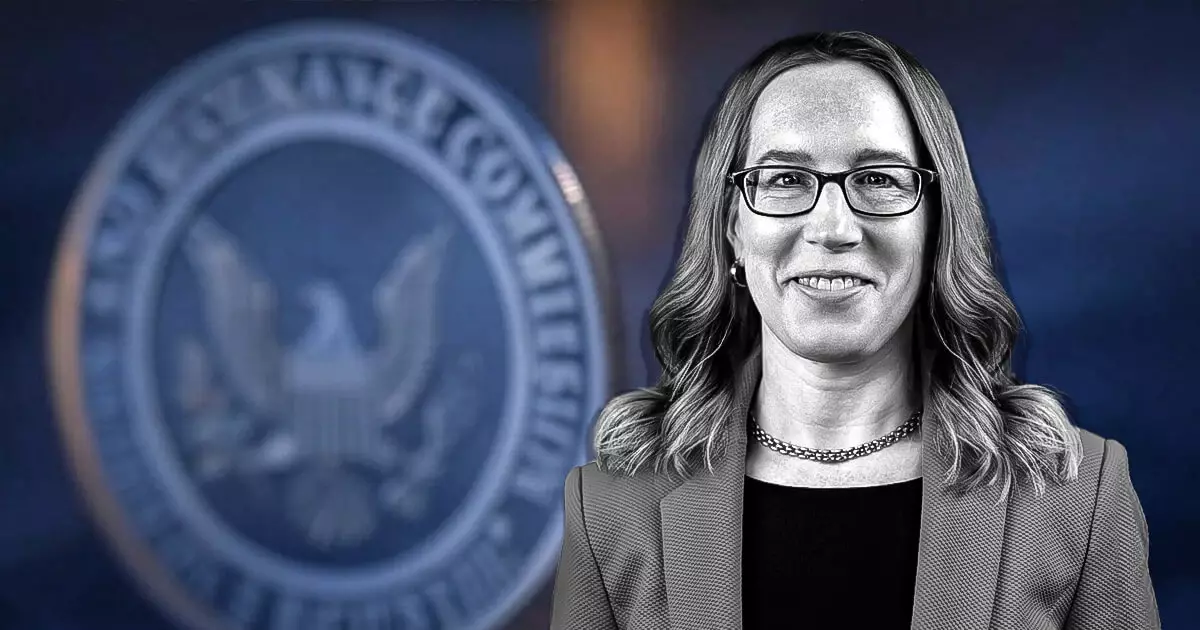In the rapidly evolving landscape of blockchain technology, the concept of decentralization remains both a guiding principle and a cleverly marketed ideal. However, as regulators like SEC Commissioner Hester Peirce highlight, the reality is far more nuanced. While true decentralized protocols—those governed by code and community consensus—are ostensibly outside the reach of traditional regulatory frameworks, the emergence of Layer-2 solutions complicates this landscape dramatically. These solutions often implement centralized matching engines to address performance and security issues such as MEV, effectively creating a hybrid space where decentralization’s purity is compromised by centralization’s efficiency. This shift presents a profound challenge: regulators are more likely to scrutinize and potentially regulate these centralized components, blurring the lines between genuine decentralization and regulated intermediary activity.
Layer-2’s Centralized Underbelly and Its Regulatory Implications
Layer-2 solutions promise scalability and faster transaction processing by operating atop Layer-1 blockchains, but many rely on centralized machinery—a fact that regulators find troubling. Centralized matching engines, which sequence transactions for purposes like mitigating front-running, exhibit characteristics much closer to traditional exchanges than the decentralized ideals often championed in the crypto sphere. Peirce explicitly draws this distinction, warning that when a single entity controls the order of transactions through a matching engine, it inadvertently steps into the realm of securities regulation. This opens the door for enforcement actions and registration requirements, which many Layer-2 operators prefer to avoid. The key issue lies in the control of transaction sequencing; while decentralized networks operate on dispersed nodes, these centralized engines concentrate that power, making them a regulatory target.
The Battle for Regulatory Clarity: Protecting Innovation Without Stifling Progress
Despite the regulatory risks, Peirce emphasizes the importance of safeguarding truly decentralized protocols—especially smart contracts on Layer-1 blockchains—whose code executes autonomously without human intervention. Her stance advocates a principles-based approach, aiming to create a safe harbor for such autonomous code while imposing oversight on entities that intervene in the transaction process. She recognizes that centralized sequencers, despite their efficiency and ability to mitigate front-running, pose legal questions when they handle securities or tokenize traditional assets. The question then becomes: at what point does a Layer-2 solution cross the threshold from a legitimate technology into an intermediary that must register as an exchange or broker-dealer?
The Community’s Role in Self-Regulation and Innovation
Peirce’s caution about regulatory overreach underscores a desire for the industry to mature through self-regulation rather than heavy-handed legislation. She advocates for the community to develop solutions that address MEV and other challenges without the regulator rushing in with rules that could inadvertently choke innovation. This choice reflects a centrist, pragmatic approach—recognizing that overregulation risks stifling the very innovations that can improve blockchain scalability and security. It’s a call for a balanced, principles-based oversight model that protects investors and encourages technological progress without turning the space into a legal minefield.
Striking the Balance Between Control and Freedom
In the final analysis, the core tension lies in the balance between decentralization’s promise of censorship resistance and the practical necessity of centralized components for performance and security. While truly decentralized protocols should enjoy legal safe harbor, the reality is that many Layer-2 solutions incorporate central control points—like matching engines—that thinly veils their regulatory exposure. For industry participants, especially those handling tokenized securities, this means a careful assessment of their infrastructure’s degree of centralization and the corresponding legal obligations. As securities increasingly migrate onto blockchain platforms, the regulatory landscape will demand transparency and accountability, ensuring that the pursuit of efficiency does not undermine investor protections or open the door to unregulated trading fireplaces.
In the end, the future of blockchain regulation hinges on discerning the difference between genuinely decentralized technology that empowers users and centralized tools that mimic traditional financial intermediaries. The industry must confront this challenge head-on, balancing innovation with responsibility in a rapidly shifting legal environment.

